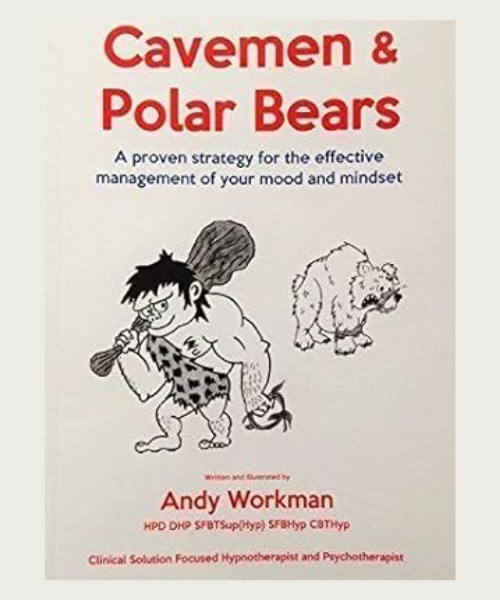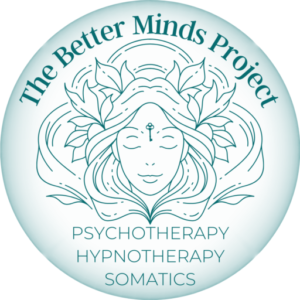
what is solution-focused therapy?
How to Use Solution-Focused Techniques
to Fend Off Depression & Anxiety
Helpful tips to harness the power of neuroplasticity, reclaim control of your thoughts and feelings, and feel good about yourself and you life again.

When you’re struggling to keep your mental health in check, it’s easy to feel stuck and overwhelmed. This sense of ‘stuckness’, and of feeling hostage to these struggles can feel impossible to overcome – like you have no control over your own mental state.
The number one reason people usually get in touch with me to begin therapy is because they are looking for someone to help them regain that control and feel like they have some agency in their own wellbeing again.
Solution-Focused therapy techniques are incredibly helpful in building a mental framework from which you can develop coping strategies that allow you to help yourself
These techniques, which you absolutely can do on your own, harness the power of neuroplasticity – your brain’s ability to create new neural pathways, and break down old ones, making physiological changes that change your way of thinking, so that your thoughts are helpful and constructive, not inhibitive or frightening. It’s all about teaching your brain how to shift your focus from problems to possibilities.
This approach emphasizes your strengths, resources, and encourages you to take small, actionable steps which create meaningful change—even when elements of every day life feel like too much to handle.
Let’s explore some key techniques from Solution-Focused therapy that you can start using today to regain a sense of agency with your thoughts and feelings…
1. Focus on What’s Working

what is solution-focused therapy?
When you’re struggling with your mental health your mind is overwhelmed with negative thoughts and feelings, and a natural focus on what’s wrong, what’s hard, and what’s beyond your control. Solution-Focused Therapy encourages you to shift your attention away from problems an encourages you to start to think about how you’d like life to be – what you can control and whatchanges you’d like to make to bring yourself closer to these ideals.
Try This:
Stop what you’re doing for a moment. Reflect on the past 24 hours and list 3 things that have been positive in some way. It might feel hard to do this at first, but just give it a try. These don’t have to be big things, they can be really small things – that moment of quiet when you got to sit down with a hot cup of tea, feeling really good about ticking of a chore on your to-do list, the sensation of the sun on your face as you walked home from work, or the person who smiled warmly at you as you passed each other in the supermarket.
You don’t have to have been feeling amazing, it can be something useful, constructive, funny, or fleeting. The important thing is to start directing your brain away from focusing on the negative, and towards positive thought processes. It’s this positive recall habit that can really shift your mood with practice.
Reflect on moments, however small, when you felt a bit better recently.
Ask yourself: What was different in that moment? What was I doing then? What helped me feel a little relief?
Repeat the actions or situations that provided comfort, and recognize the strength it took to notice them.
2. Use the Miracle Question

The Miracle Question is a classic Solution-Focused therapy tool designed to help you imagine a brighter future.
Ask Yourself:
If I woke up tomorrow and my depression or anxiety was just a little bit better – perhaps 5% more manageable, what would be different?
What would I first notice would be different? What would I be doing differently? What would it change? Who else might notice? What in particular might they notice?
This question shifts your thoughts away from what feels wrong and allows your brain to practice what life could look like when things feel right. This process of imagining how things might be if they were a bit better forges a neural pathway in the brain that is then available for your brain to use in the future. Brains are lazy, they like to use pathways that already exist, so by just imagining an improvement in this way you’re making it easier for you brain to feel more positive in the future.
It’s also a powerful way to identify small achievable goals and begin working toward them, step by step.
3. Find Exceptions to the Problem

Even in the toughest times, there are moments when anxiety or depression eases up, even if the difference is only small. The trick is to cast your mind back to an occasion in the past where you remember the anxiety being less of a problem, or the depression feeling less heavy.
How to Spot Them:
Think of a time when you felt even slightly better. What was different about that situation?
Try to focus on the detail here – it’s easy to think “I don’t know why, I just felt a bit better” but really try to consider all aspects of that experience:
What was different about your thoughts?
How did you feel in your body?
Was anything different about your environment, any actions you took or other people took, or perhaps the absence of factors what helped you feel calmer, or more positive?
Really try to root out the difference of this particular time and how that positively impacted your experience.
Once you’ve identified an exception, brainstorm ways you might use these useful nuggets of difference – how can you recreate these differences, or expand on them in your daily life?
4. Set Small, Achievable Goals

Solution-Focused therapy encourages you to break big goals into small, manageable steps. If you wanted to train for a marathon you wouldn’t start with a 10k run – that would seem impossible! So you’d start by seeing if you can jog around the block. When you start small and build on each little win, you set achievable, manageable goals that realistically and comfortably guide you to where you really want to be.
Action Plan:
Pick one thing you’d like to improve (e.g., “I want to feel less overwhelmed at work”).
Ask yourself: What’s one small step I can take today toward that goal? How can I help myself feel just 5% more comfortable? What small change can I make to my day that will help me, even if just a little bit?
Take positive action – experiment with using these ideas to see what works. If you try something and it doesn’t help, don’t be discouraged, it’s still a win – you’re learning more about how you can help yourself. Try something else tomorrow, you’ll be surprised how much small changes can really improve your comfort levels
Celebrate every tiny success—it’s a sign you’re moving forward, even if progress feels slow.
5. Recognize Your Strengths

Depression and anxiety can make you forget just how resilient and resourceful you really are. Solution-focused thinking helps you reconnect with your inner strengths.
You have all the tools you need to help yourself, you just need to work out what these tools are and how to use them.
Journal Prompt:
Write down three things you’ve done in the past that required courage or problem-solving. How did you cope? What did you do to help yourself get through it? What strengths did you find yourself calling on?
It might be hard to see your strengths at first, but stick with it – after all, you have survived everything that’s happened to you so far! How have you managed?
Reflect on what you did in the past (this could be a particular coping thought, or a specific action) that helped you manage the toughest of times – how could you use these experiences to help you manage your current challenges?
Being Solution-Focused is all about looking at what you want to achieve and focusing on how to reach that positive outcome
It’s all about changing your focus of attention, spending time looking at what works, what you do have control of, and how you want your life to be, focusing on how you can affect change in yourself and build towards goals in a steady, achievable way.
By focusing on what’s working, rather on what’s not working, you’re imagining a better future, and harnessing your strengths, you can create meaningful change in your life.
Start where you are, use what you have, and trust in your ability to find solutions—one small step at a time.

If this model of therapy really resonates with you, and you want to delve deeper into how your brain works, what causes anxiety and depression, and how to use a combination of simple neuroscience and a solution-focused approach to improve your wellbeing, I recommend “Cavemen & Polar Bears: A Proven Strategy for the Effective Management of Your Mood and Mindset” by Andy Workman.
It’s a comprehensive guide that delves into the intricacies of the human mind, offering strategies to manage mood and mindset effectively.
Perhaps most importantly, it’s written in a really accessible and easy to understand way, so it’s a really great book for people looking to gain a deeper understanding and more agency over their own mental health, without being overwhelmed by the science or theory behind it.
If you really like the idea of improving your mental health in a positive goal-oriented way, but you feel like you need some professional support to get yourself started, feel free to get in touch. I’m an experienced psychotherapist and hypnotherapist, and I help people with this sort of stuff all the time. I work online as well as in person (you can find out more about me here, and info about booking and prices here) if you’d like to work with me.
And if you’re just looking for something you can do by yourself, check out my range of hypnotherapy relaxation tracks, some of which are designed specifically for sleep. You can download them in seconds, and they are incredibly helpful for helping you de-stress and reset your brain so it’s ready for sleep.
You can also pick up more tips and info on how to successfully hack your mental health on my socials, just click the links below.
